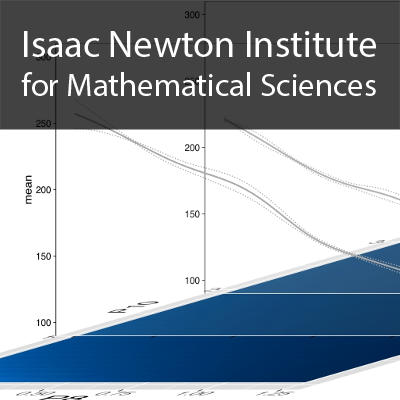A domain-decomposition-based model reduction method for convection-diffusion equations with random coefficients
58 mins 48 secs,
855.27 MB,
MPEG-4 Video
640x360,
29.97 fps,
44100 Hz,
1.93 Mbits/sec
Share this media item:
Embed this media item:
Embed this media item:
About this item

| Description: |
Zhang, G
Tuesday 6th February 2018 - 14:30 to 15:30 |
|---|
| Created: | 2018-02-07 14:25 |
|---|---|
| Collection: | Uncertainty quantification for complex systems: theory and methodologies |
| Publisher: | Isaac Newton Institute |
| Copyright: | Zhang, G |
| Language: | eng (English) |
| Distribution: |
World
|
| Explicit content: | No |
| Aspect Ratio: | 16:9 |
| Screencast: | No |
| Bumper: | UCS Default |
| Trailer: | UCS Default |
| Abstract: | We focuses on linear steady-state convection-diffusion equations with random-field coefficients. Our particular interest to this effort are two types of partial differential equations (PDEs), i.e., diffusion equations with random diffusivities, and convection-dominated transport equations with random velocity fields. For each of them, we investigate two types of random fields, i.e., the colored noise and the discrete white noise. We developed a new domain-decomposition-based model reduction (DDMR) method, which can exploit the low-dimensional structure of local solutions from various perspectives. We divide the physical domain into a set of non-overlapping sub-domains, generate local random fields and establish the correlation structure among local fields. We generate a set of reduced bases for the PDE solution within sub-domains and on interfaces, then define reduced local stiffness matrices by multiplying each reduced basis by the corresponding blocks of the local stiffness matrix. After that, we establish sparse approximations of the entries of the reduced local stiffness matrices in low-dimensional subspaces, which finishes the offline procedure. In the online phase, when a new realization of the global random field is generated, we map the global random variables to local random variables, evaluate the sparse approximations of the reduced local stiffness matrices, assemble the reduced global Schur complement matrix and solve the coefficients of the reduced bases on interfaces, and then assemble the reduced local Schur complement matrices and solve the coefficients of the reduced bases in the interior of the sub-domains. The advantages and contributions of our method lie in the following three aspects. First, the DDMR method has the online-offline decomposition feature, i.e., the online computational cost is independent of the finite element mesh size. Second, the DDMR method can handle the PDEs of interest with non-affine high-dimensional random coefficients. The challenge caused by the non-affine coefficients is resolved by approximating the entries of the reduced stiffness matrices. The high-dimensionality is handled by the DD strategy. Third, the DDMR method can avoid building polynomial sparse approximations to local PDE solutions. This feature is useful in solving the convection-dominated PDE, whose solution has a sharp transition caused by the boundary condition. We demonstrate the performance of our method based on the diffusion equation and convection-dominated equation with colored noises and discrete white noises. |
|---|---|
Available Formats
| Format | Quality | Bitrate | Size | |||
|---|---|---|---|---|---|---|
| MPEG-4 Video * | 640x360 | 1.93 Mbits/sec | 855.27 MB | View | Download | |
| WebM | 640x360 | 726.1 kbits/sec | 312.79 MB | View | Download | |
| iPod Video | 480x270 | 521.63 kbits/sec | 224.65 MB | View | Download | |
| MP3 | 44100 Hz | 249.76 kbits/sec | 107.69 MB | Listen | Download | |
| Auto | (Allows browser to choose a format it supports) | |||||

